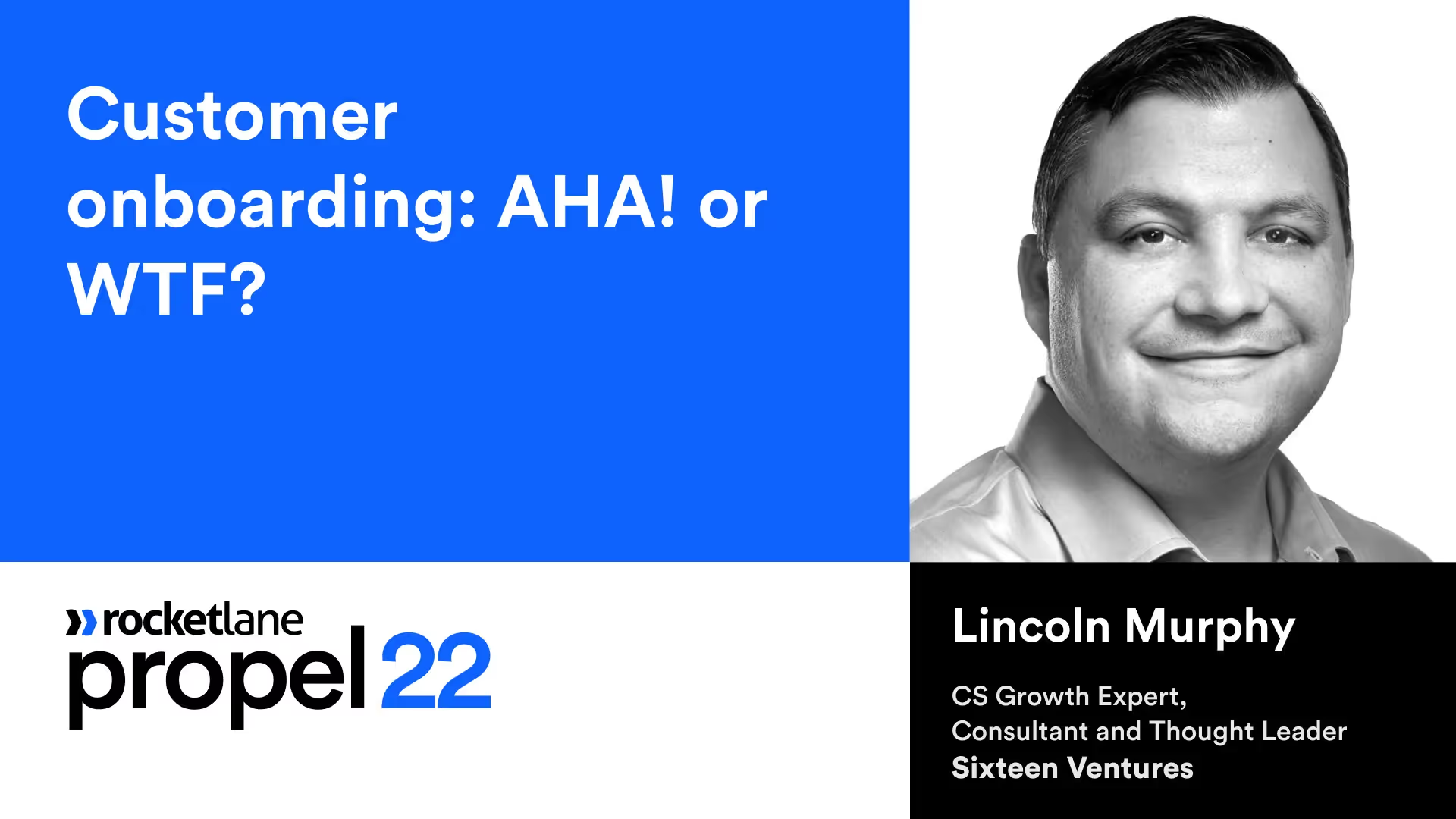Lincoln Murphy kickstarted the inaugural session of Propel 22. He aimed to educate the audience on how they can move from a "WTF" onboarding experience to an "AHA" one.
He spoke about:
- The importance of customer onboarding
- How it's the most structured process in a customer's lifecycle
- What a "WTF" onboarding looks like
- How it's different from a "failed" onboarding
- The various metrics impacted by onboarding
- Five ways to go from a "WTF" to an "AHA this is great" experience
Here are some of the key takeaways from Lincoln's session.
Lincoln started his session by talking about the importance of customer onboarding: it helps establish the customer's first impression with a company and can make or break your relationship with them going forward.
He then shared the reasons why onboarding is the most structured process in a customer's lifecycle.
"Onboarding is designed around the functional and technical requirements to "stand-up" a new product for a customer. This process is normalized across segments or sometimes all customers regardless of type."
He then explained to viewers what a "WTF" onboarding experience is. How the post-sale period usually involves a "functional trough of sadness," as depicted below. This is usually when customers begin to lose excitement in your product due to all the work involved from their side.
This trough of sadness usually results from your sales team not setting the right expectations with the customer. It is then the CSM's responsibility to pull the customer out of this trough and help them slowly realize value.
During the trough of sadness is when you'll hear your customers tell you things like, "I didn't sign up for this," "I don't have the time," or "I feel like it's too much work." They might even begin rescheduling meetings or outright ghost you.
"WTF" onboarding experiences lead to:
- Slower onboarding
- Reduced adoption velocity
- Reduced adoption breadth and depth
- Less success than they hoped for
- The customer not getting as much value as they hoped they would
.png)
This is very different from "Failed Onboarding" where:
- You have dropped the ball completely
- You ghosted them
- They never got up and running
- They don't renew
- They actively cancel
- They take legal action to cancel their contract
.png)
It's interesting to note that a "WTF" onboarding experience still results in the customer getting value; it's just that they're getting far lesser value than they can if onboarding is optimal.
Metrics impacted by onboarding
The leadership team can be persuaded to invest more into the onboarding process only if you talk to them in terms of the metrics impacted by onboarding.
These metrics are:
- Customer Churn/Retention
- Contraction (Downgrade/Discounts)
- Expansion
- Advocacy
- Net Revenue Retention (NRR) or Net Dollar Retention (NDR)
"So if you're thinking, why do I do what I do? What's the value of this? Why or how do I get my company to invest more in onboarding? You will get their attention if you can point to the fact that you're directly impacting net revenue retention. NRR is one of the key metrics that investors look at to determine your company's value. So literally, how much your company is worth is determined, in no small part, by net revenue retention. So make sure you talk about NRR and how you're going to reduce contraction, how are you going to create the conditions for expansion, and you're going to create the conditions for advocacy for customers to go out and spread the good word for you."
Five ways to go from a "WTF" to an "AHA THIS IS GREAT" onboarding experience
This is what an AHA onboarding experience looks like.
.png)
The customer is happy during the sales, onboarding, and post-onboarding phases.
There's no functional trough of sadness, no confusion, and no ghosting. This is the objective of an ‘AHA!’ onboarding.
According to Lincoln, an "AHA" experience is orchestrated by figuring out the answers to the following five questions instead of the conventional how:
WHAT are your customers trying to accomplish?
WHEN are they trying to accomplish this by?
WHY is this important to them?
WHO is impacted by hitting these goals? WHO are all the important players on their end?
WHERE are the customers starting from? Are they starting from zero or seven million in ARR?
"All the boring functional and technical stuff like, 'go get this data, configure the account, add the users, or activate these licenses' have so much more meaning when you can show that they are in service of their overall goals."
If you could get your customers to talk about this, it would change everything about the onboarding experience. They start feeling like you are offering them a customized experience, increasing their buy-in.















